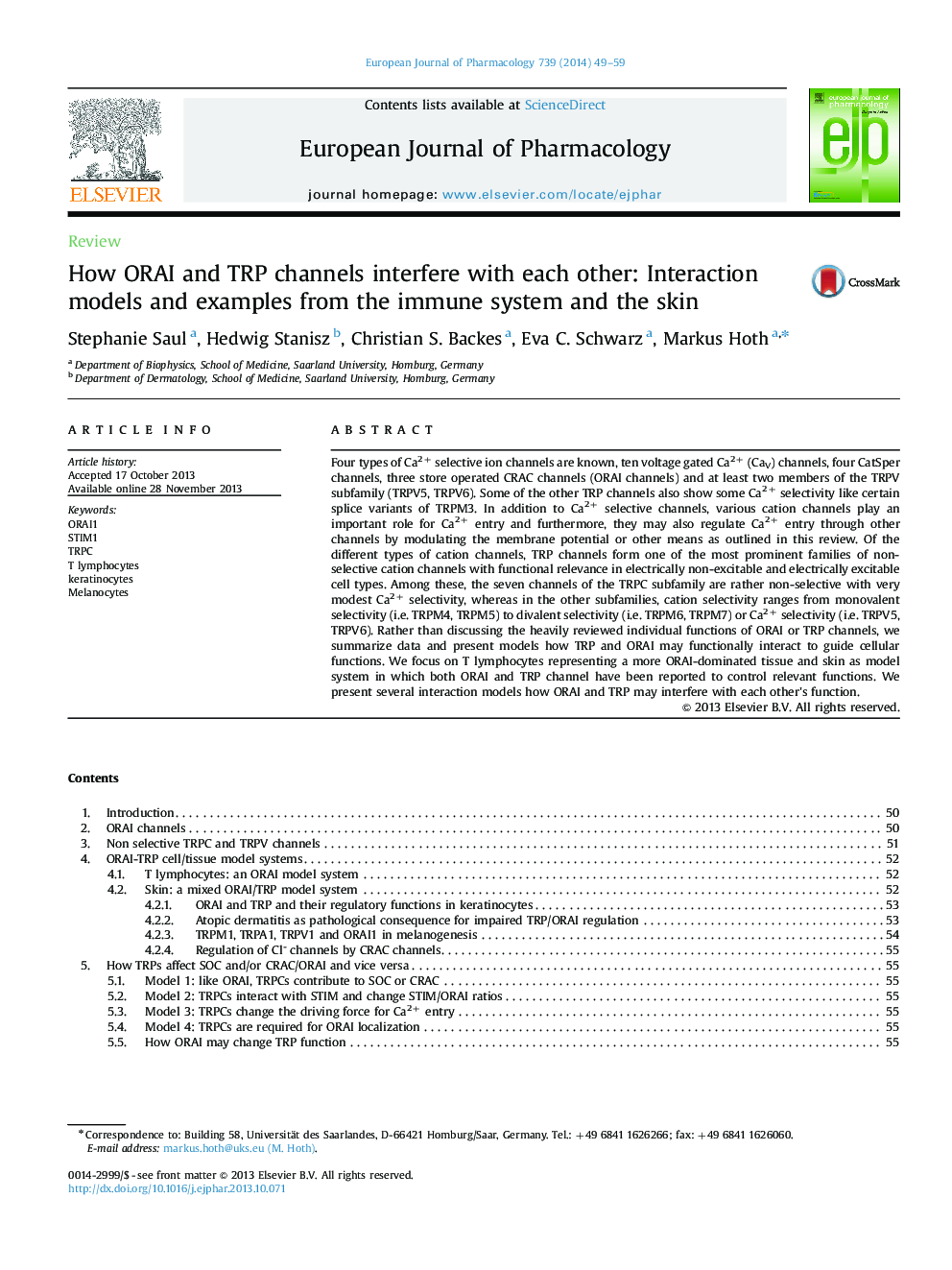| Article ID | Journal | Published Year | Pages | File Type |
|---|---|---|---|---|
| 2531697 | European Journal of Pharmacology | 2014 | 11 Pages |
Four types of Ca2+ selective ion channels are known, ten voltage gated Ca2+ (CaV) channels, four CatSper channels, three store operated CRAC channels (ORAI channels) and at least two members of the TRPV subfamily (TRPV5, TRPV6). Some of the other TRP channels also show some Ca2+ selectivity like certain splice variants of TRPM3. In addition to Ca2+ selective channels, various cation channels play an important role for Ca2+ entry and furthermore, they may also regulate Ca2+ entry through other channels by modulating the membrane potential or other means as outlined in this review. Of the different types of cation channels, TRP channels form one of the most prominent families of non-selective cation channels with functional relevance in electrically non-excitable and electrically excitable cell types. Among these, the seven channels of the TRPC subfamily are rather non-selective with very modest Ca2+ selectivity, whereas in the other subfamilies, cation selectivity ranges from monovalent selectivity (i.e. TRPM4, TRPM5) to divalent selectivity (i.e. TRPM6, TRPM7) or Ca2+ selectivity (i.e. TRPV5, TRPV6). Rather than discussing the heavily reviewed individual functions of ORAI or TRP channels, we summarize data and present models how TRP and ORAI may functionally interact to guide cellular functions. We focus on T lymphocytes representing a more ORAI-dominated tissue and skin as model system in which both ORAI and TRP channel have been reported to control relevant functions. We present several interaction models how ORAI and TRP may interfere with each other's function.
